Baby Teeth Charts and Timelines
-
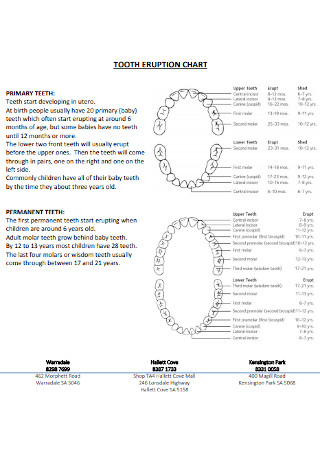
Babay Tooth Eruption Chart Template
download now -
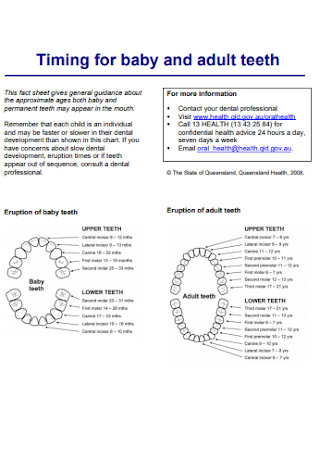
Timing for Baby and Adult Teeth Chart
download now -
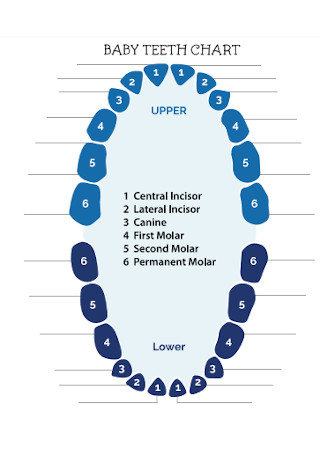
Sample Baby Teeth Chart Template
download now -
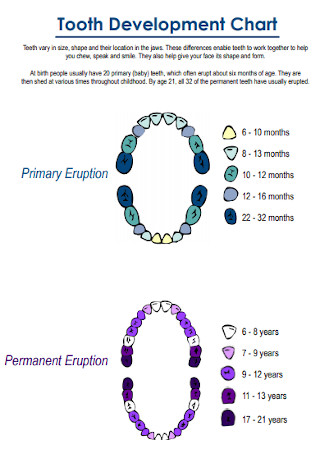
Sample Baby Tooth Development Chart Template
download now -
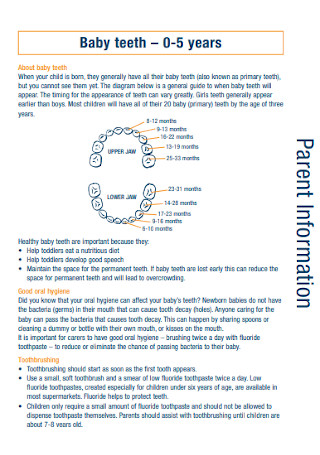
Baby Parents Information Teeth Chart Template
download now -
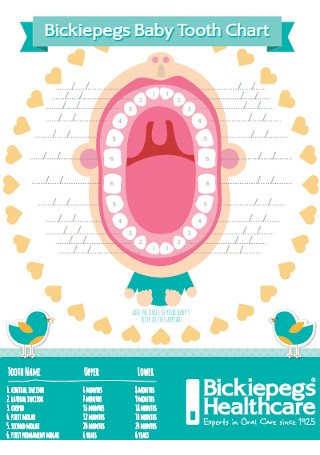
Bickiepegs Baby Tooth Chart
download now -
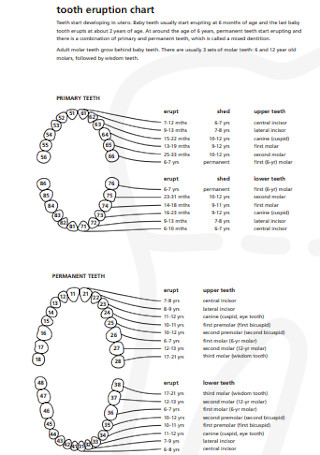
Baby Tooth Eruption Chart Template
download now -
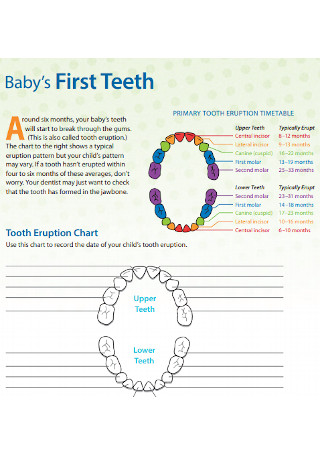
Sample Baby First Teeth Chart Template
download now -
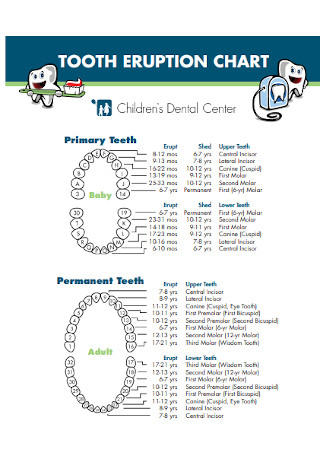
Children Primary Teeth Chart Template
download now -
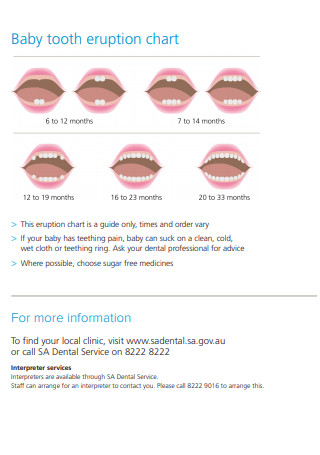
Baby Tooth Eruption Chart Example
download now -

Baby Teeth Come Marching in Chart
download now -
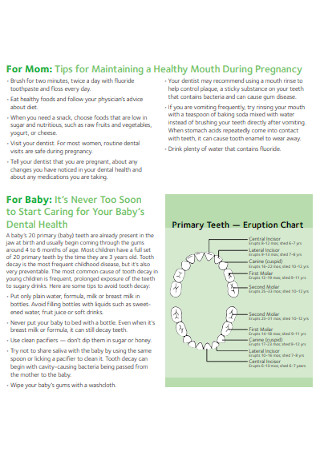
Baby Healthy Mouth Teeth Chart
download now -
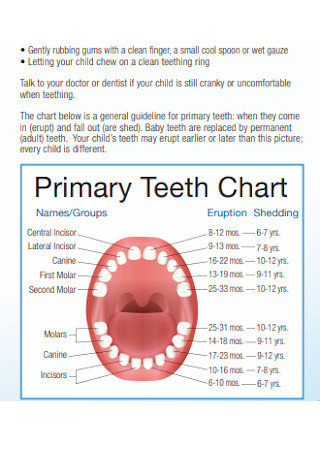
Sample Primary Teeth Chart Template
download now -
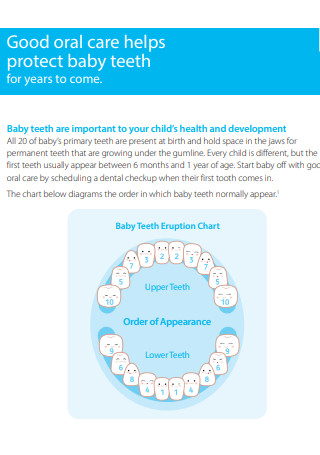
Simple Baby Teeth Chart Template
download now -
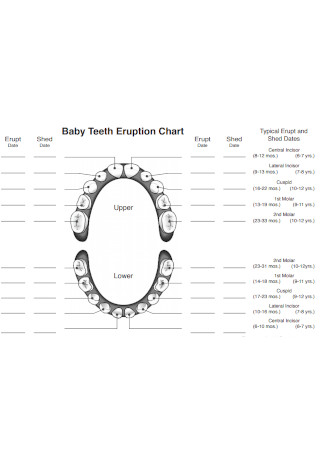
Baby Teeth Eruption Chart
download now -
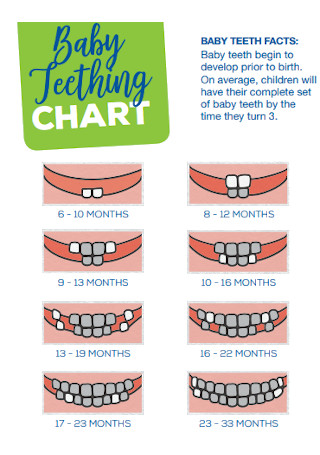
Sample Baby Teething Chart Template
download now -
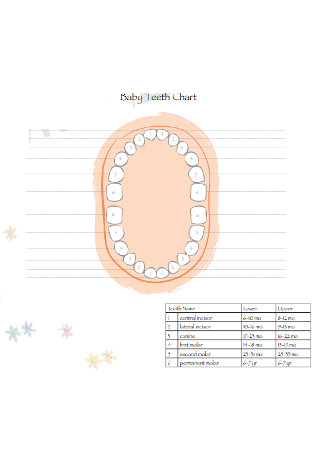
Basic Baby Teeth Chart Template
download now -
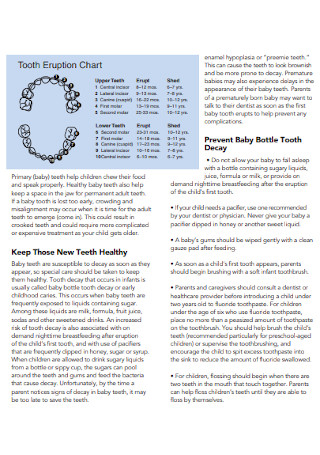
Baby Bottle Tooth Chart Template
download now -
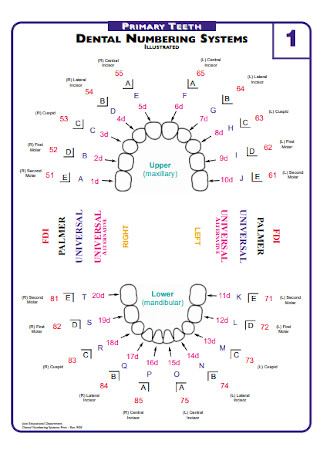
Baby Teeth Numeric System Chart
download now -
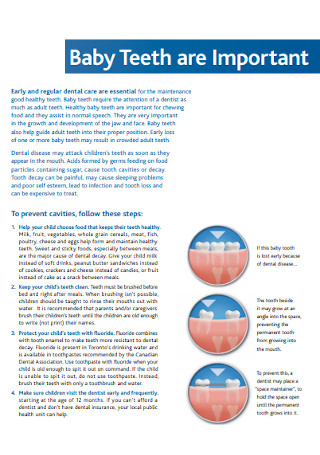
Baby Teeth are Important Chart Template
download now -
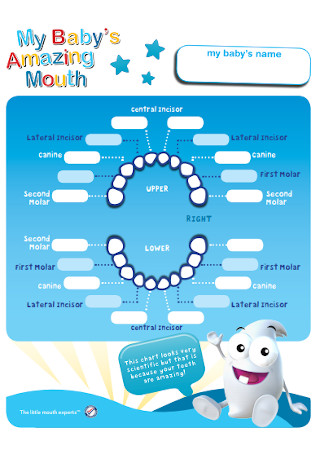
Baby Amazing Mouth Chart Template
download now -

Baby Primary and Permanent Teeth Template
download now -
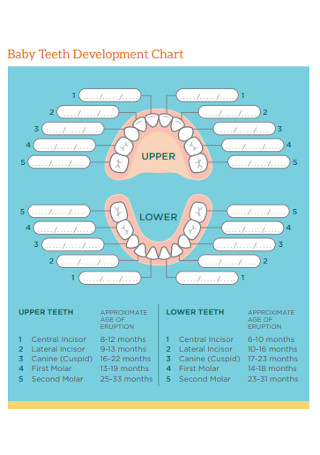
Baby Teeth Development Chart
download now -
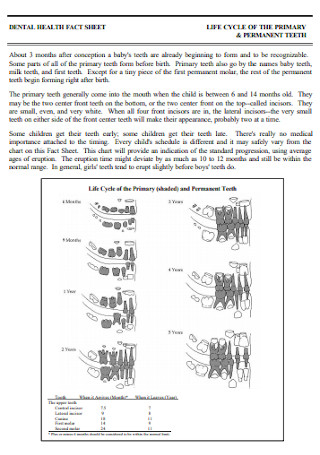
Basic Baby Perminant Teeth Chart Template
download now
FREE Baby Teeth Chart and Timelines s to Download
Baby Teeth Charts and Timelines
What are Baby Teeth Charts?
Do You Know Your Teeth?
Why Teeth Develop Late
Signs of Teething
How to Soothe Teething Discomfort
FAQs
What is the order of teeth eruption?
Is it bad if the baby teeth appear in a different order?
When does teething start?
How long does teething happen?
Which baby teeth eruption is the most painful?
What are Baby Teeth Charts?
As parents, it is essential that we monitor our child’s health and development. And you don’t need to have a medical degree to follow the timeline of events. By checking in on our kids, we would have an idea of what is normal for them. When something is wrong, we can observe irregularities and deviation from the usual activity. But how do we know if that activity is typical for most kids? For that, we can refer to a standard. We did not go to dental school, so we might not be experts on our children’s oral health. When babies start teething, how do we assess if everything is alright?
During the first signs of teething, parents look for a baby teeth chart so that they would understand what is going on in their child’s oral cavity. The chart is a diagram of a kid’s upper and lower teeth. Next to each tooth is a label that corresponds to what that tooth is called. Sometimes, the chart comes with a timeline of teeth eruption on a corner of the diagram. The period when each teeth erupts is expressed in the range of weeks or months because babies do not follow a strict teething schedule. Other tooth eruption charts show the erupting process as a timeline entirely. To illustrate, there are only two teeth in the sixth month. Then, there would be four teeth when the child is eight months old. These charts and timelines are helpful guides for parents, especially those who are worried about why their babies seem to be in distress.
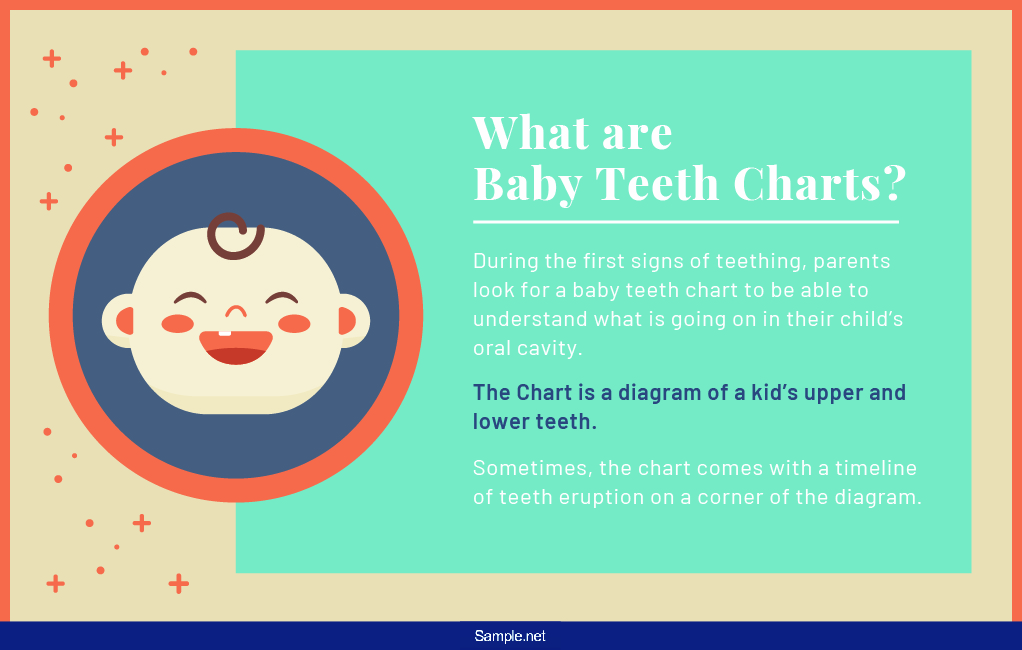
Do You Know Your Teeth?
Do you notice how your pet dog or cat has pointy teeth while your teeth are broader at the end? This variation is not a random design. Our teeth’s shape and arrangement in our mouth serve a purpose. If you inspect your teeth in the mirror, you will notice that even they don’t look the same. Each tooth’s form and location are related to its function. For both upper and lower teeth, we have four types of teeth.
Why Teeth Develop Late
Our teeth are important not just for eating. They also help us talk. And a healthy set of teeth always makes for a beautiful smile. But if it is that important, how come it develops late? Why couldn’t we have a complete set of teeth right after we are born? Actually, babies are born with a complete set of teeth. These just didn’t appear yet. They are inside the jaw, waiting for the right time to come out. Babies do not eat food in the first few months of being born, too. They feed on milk. Drinking milk doesn’t need a full set of teeth. There is nothing to cut, rip, chew, and grind.
While that’s all well and good, it doesn’t explain why babies have to shed our teeth later. If the teeth are perfectly cared for through commendable personal hygiene, why do we have to lose them? When we were babies, our heads were not as big as they are now. We had a small mouth, a small head, and a small body to carry that head. So the teeth we have are just perfect for our little heads. We can’t fit 32 teeth in our small jaw. And we had no use for the extra molars. But as we grow up, our heads don’t stay the same size. We also eat more food. To keep up with our diet and to ensure that our digestive process, which extracts the body’s fuel from food, is not impeded, extra 12 teeth appear as we grow up. We trade our weaker baby teeth for better and stronger permanent teeth. And you could say that that trade was a wonderful bargain.
Signs of Teething
However, this process does not happen overnight. When the first or the primary set of teeth erupts through our gums, it is painful and uncomfortable. Before the teething phase, babies would often gnaw on anything they can get their tiny hands-on. They may also be drooling more than usual because the process encourages increased saliva production. These teething symptoms may be the babies’ way of expressing that they are bothered by the sensation in their mouth. Teething starts when you can feel bumps or buds on the child’s gums. When the teeth start coming out through the gums, you will notice your baby crying often. And if you had anything going through your gums, you might cry too.
How to Soothe Teething Discomfort
We have no way of saying to our babies that this is a normal process, and they should just pull through. And that after that, they can enjoy better food. Instead, we do what we can to reduce their discomfort and pain. In no particular order, here are some tips on teething remedies that you may find useful in comforting your baby during an uncomfortable time. However, remember that symptoms like fever, diarrhea, and rash are not normal. You should seek medical attention when these symptoms appear. When you are unsure of how to handle a situation, consult with your child’s pediatrician. A qualified professional can recommend better and safer treatments. When in doubt, under no circumstances should you risk your child’s safety by taking medical advice, diagnosis, and at-home dental treatment recommendations from the Internet.
Step 1: Give Something to Gnaw On
Your baby would want to gnaw, and they will. To prepare for this occasion, you can just give in to what your baby wants. Prepare a clean and soft washcloth. Moisten the cloth and place it in a clean plastic bag. Let the bag sit in the fridge long enough that it cools down. Or you can use the tried-and-tested teething rings. You may also resort to washable teething toys, as long as the toy is safe for the child. These do wonders in helping soothe the baby’s discomfort.
Step 2: Gently Massage the Gums
Babies feel the peculiar sensation on their gums as their teeth are on the process of erupting. Teething rings and toys help relieve the sensation because of the pressure that is applied to the gums. You can simulate this effect by gently rubbing the gums with clean fingers or a moist washcloth. Make sure that the cloth you use is clean or that your fingers are neatly trimmed so you won’t hurt your child. Always wash your hands before doing this.
Step 3: Provide Safe Painkillers
There is pain during teething. When the pain seems unbearable for your child, consult your baby’s pediatrician on what painkillers can he or she recommend. The doctor will advise you to purchase certain painkillers. He or she will also inform you of the dosage and treatment. When the treatment did not seem to help, do not take it upon yourself to find an alternative cure. Request for a doctor’s appointment to settle your worries.
Step 4: Avoid Internet Lifehacks
The Internet is a minefield of helpful and harmful information. Do not take your chances. There are blogs and websites that recommend giving your babies charms and necklaces with pendants to reduce teething discomfort. There are also ads about teething tablets that contain unregulated and possibly unsafe concentrations of ingredients. These therapeutic claims remain unverified. You may just waste your money on an ineffective product. Worse, your child might choke on the removable parts of these objects or suffer from adverse side effects.
FAQs
What is the order of teeth eruption?
Teething does not happen all at once. That would be unbearable. Instead, each of the primary or milk teeth appears separately. The first to erupt is usually the incisors, followed by the first molars, canines, and then the second molars. The premolars appear much later in the child’s life. By two to three years, your kid already has a complete set of 20 milk teeth.
Is it bad if the baby teeth appear in a different order?
Development is not a cookie-cutter process. Teeth eruption usually appears in the order of incisors, first molars, canines, then the second molars. However, the process is not the same for everyone. According to Healthline, out-of-order teeth eruption is normal and shouldn’t worry you.
When does teething start?
Normally, teething begins when the baby is around four to six months old. Monitor your child’s teeth eruption by downloading our helpful printables on the tooth eruption chart and timeline! It illustrates the process and period of teething so that you would know what to expect during this phase in your child’s life.
How long does teething happen?
Although the teething period can be different for different babies, according to BetterHealth, each tooth can take around eight days to emerge from the gums.
Which baby teeth eruption is the most painful?
When the molars emerge from the gums, it is possibly the most painful stage of teething. These teeth have a bigger surface, which means more of the gums will be pushed. The case varies from baby to baby, though. Some would say the first teeth eruption hurts the most. Others would say the canines caused their babies the most teething pain.
It is important to monitor your child’s teeth eruption so that you can comfort your little ones during this phase. It is painful, uncomfortable, and bothersome to have pointy or wide objects pushing through your gums. By checking in on your child, you will know when his or her teeth started appearing. Then, you can also prepare your child for proper oral hygiene. Because although we lose our milk teeth when we’re older, the next set of teeth we’ll have will be with us for a lifetime.
